
Manufacturer's Specifications:
FM Tuner Section:
Usable Sensitivity: 10.3 dBf.
50-dB Quieting: Mono, 15.0 dBf; stereo, 36.8 dBf (auto-blend off).
S/N Ratio: Mono, 82 dB; stereo, 74 dB.
THD at 1 kHz: Mono, 0.08% wide, 0.15% narrow; stereo, 0.1% wide, 0.2% narrow.
Selectivity: Wide, 55 dB; narrow, 75 dB.
Capture Ratio: 1.5 dB.
AM Suppression: 60 dB.
I.f. and Spurious Response Rejection: 100 dB.
Image Rejection: 85 dB.
Subcarrier Rejection: 60 dB.
Stereo Separation: Wide, 46 dB at 1 kHz, 42 dB at 100 Hz, and 43 dB at 10 kHz; narrow, 40 dB at 1 kHz, 36 dB at 100 Hz, and 40 dB at 10 kHz; with high blend, 20 dB at 1 kHz, 37 dB at 100 Hz.
Frequency Response: 50 Hz to 15 kHz, ±0.5 dB.
AM Tuner Section:
Usable Sensitivity: Internal loop, 300 µV/M.
Selectivity: 40 dB.
Image Rejection: 40 dB.
I.f. Rejection: 50 dB.
S/N Ratio: 52 dB.
THD: 0.5%.
Amplifier Section:
Power Output: 85 watts, 8 ohms, 20 Hz to 20 kHz; 110 watts, 4 ohms, 20 Hz to 20 kHz.
THD: 0.D1%, 8 ohms; .0.05%, 4 ohms.
SMPTE IM: 0.005% at half power.
Damping Factor: 130.
Dynamic Headroom: 2.0 dB.
Slew Rate: 100 V/µS.
Input Sensitivity: MM phono, 2.5 mV; MC phono, 0.1 mV; high level, 150 mV; main amp in, 1.0 V.
Maximum Phono Input Level: MM, 250 mV; MC, 20 mV.
Frequency Response: MM phono, RIAA ±0.2 dB; MC phono, RIAA ±0.3 dB; high level, 1 Hz to 100 kHz, -2 dB.
S/N Ratio: MM phono, 78 dB; MC phono, 75 dB; high level, 87 dB; main in, 95 dB.
Tone Control Range: ±10 dB at 100 Hz and 10 kHz.
Filter Cut-Off Points: 18 Hz and 8 kHz at 12 dB/octave.
General Specifications:
Power Consumption: 230 watts.
Dimensions: 18 1/2 in. (47 cm) W x 5 3/8 in. (13.65 cm) H x 17 1/8 in. (43.21 cm) D.
Weight: 31 1/4 lbs. (14.1 kg).
Price: $650.00.
Mitsubishi's top-of-the-line DA-R35 receiver incorporates just about every feature and convenience found in that company's separate component tuners and amplifiers. As you might expect, the tuner section employs quartz-controlled frequency synthesis and, as is true of recent synthesized tuners from companies such as Sony and Pioneer, Mitsubishi has managed to overcome one of the objections to this accurate form of tuning; there is no sacrifice of signal-to-noise ratio in obtaining the benefits of true frequency synthesis. The DA-R35 incorporates a number of computerized, automatic features, such as automatic determination of when to switch from wide to narrow i.f. bandwidth and when to engage the stereo FM auto-blend. While it is possible to override both of these automated functions, the override works only in one direction. That is, you can select wide-band (as opposed to automatic) and you can choose to defeat auto-blend even when the internal computer circuits say that it should be "on." I rather wish that Mitsubishi had given us both options in each of the auto defeat modes, but I am undoubtedly influenced by the needs of the lab test bench rather than the needs of the stereo FM listener in the real world of signal interferences and weak signal reception.
A main power switch, two individual speaker switches, high and low filter switches, and a mode switch (mono/ stereo) are arranged at the upper left of the front panel of this receiver. To their right are a separate record-selector switch and a program selector which permits the user to listen to one program source while taping another. A phono MM/MC pushbutton is located between these two rotary selector knobs, while below are a balance control, separate loudness control, treble and bass controls, and the usual stereo headphone jack. A tone control defeat pushbutton is located between the two tone controls.
The right half of the panel is dominated by the digital frequency readout display, above which are a pair of peak level indicators (one per channel) which illuminate when power output approaches or exceeds rated value, the high blend indicator, and wide and narrow i.f. indicator lights.
Below the display are seven station preset buttons and a "memory" set button. These combine to memorize seven AM plus seven FM station frequencies for instant recall.
Further to the right are five LEDs which normally show relative incoming signal strength but which, at the touch of a button, will also display levels of multipath interference.
"Up" and "down" manual tuning buttons are just to the right of the digital display, while further to the right is the master volume control.
The lower right corner of the panel contains six pushbuttons. These select signal strength or multipath indication, "auto" or wide i.f., AM or FM reception, muting on/off (with muting off, only mono will be received), high-blend "auto" or "off" and manual or "auto" tuning. In the "auto" tuning mode, touching the "up" or "down" tuning buttons will cause tuning to move in the designated frequency direction until an acceptable signal is encountered. In the "manual" mode, touching the buttons advances tuning in 200-kHz increments on FM and in 10-kHz increments on AM. The rear panel is equipped with a mini-loop AM antenna which must be connected by the user. FM antenna terminals are provided for 75-ohm coaxial or 300-ohm twin-lead transmission lines. A ground terminal is located near the phono jacks, adjacent to which are high-level inputs and tape jacks for two complete tape monitor circuits. The preamp-out/main amp-in jacks are of a type which will automatically "break" the signal path when an external component is connected to the "main amp in" jacks, so that no switch or wire jumper pair is needed in connection with this feature. The center of the panel has a recessed area which accepts three "AA" batteries (supplied) that must be installed if station preset information is to be retained in the receiver's "memory" even when a.c. power is off. While there is, of course, nothing wrong with seeing the batteries mounted in this exposed opening, I would have preferred some sort of rudimentary cover over the batteries. (Mitsubishi will no doubt tell me that no one looks at the back of a receiver, to which I will reply that I do. ...) Two sets of spring-key speaker terminals and three convenience a.c. outlets (two switched, one unswitched) complete the rear panel layout.
Circuit Highlights
A system Mitsubishi calls a "pulse swallow" counter circuit raises the reference frequency used in their special prescaler circuits that are involved in the frequency synthesis process so that it does not fall within the audio band, thereby achieving S/N ratios in FM comparable to those achieved with the very best analog tuning schemes. The equalizer amplifier (phono) section of this receiver utilizes a dual-FET first stage, with differential amplification for low distortion and high signal-to-noise ratio, and the extra amplification needed for direct connection of an MC cartridge is provided. The power amplifier circuitry uses a minimal amount of loop negative feedback, with direct ( d.c.) coupling between stages as well as between the output and the speaker terminals. In addition, the tone and power amplifier sections employ d.c. servo circuitry for added low-frequency stability. Like so many other recent receiver and amplifier designs, the DA-R35 also employs what Mitsubishi calls "linear switching" a form of Class B operation which offers some of the benefits of Class A without a loss of efficiency.
Tuner Measurements
Usable mono sensitivity of the FM tuner section measured 11.2 dBf, exactly as claimed. Fifty-dB quieting in mono required an input signal of 15 dBf; in stereo the required signal strength was 37 dBf. The S/N in mono, for 65-dBf input signals, was a high 82 dB, while in stereo I measured 74 dB for the same input signal level. Selectivity in the narrow mode measured 75 dB, as claimed, decreasing to 58 dB in the wide i.f. mode. Capture ratio fell a bit short of claims, with a reading of 1.6 dB. Distortion for a 1-kHz signal measured 0.067% in mono and 0.10% in stereo (in the wide i.f. mode). Quieting and mid-frequency (1-kHz) distortion characteristics versus input signal strength are plotted in Fig. 1 for mono and stereo modes, in the wide i.f. bandwidth position. Distortion at other audio frequencies is shown for both mono and stereo reception in Fig. 2. Even with a 100% 10-kHz stereo modulation signal, harmonic distortion of this excellent FM tuner section did not exceed 0.4%. IM distortion in stereo, using the twin-tone test method (14 and 15 kHz), measured 0.12% in the wide mode.
Figure 3 shows spectrum analysis displays of this form of IM distortion measurement. In Fig. 3A the tuner was operated in the wide mode. The center, tall spike is a reference 100% modulation level of 1 kHz. The shorter spike within it is the 1-kHz "beat" signal resulting from the IM generated between the 14 kHz and 15 kHz signals seen at the right of the sweep. Vertical sensitivity in this and all other spectrum analyzer scope photos is 10 dB per division.
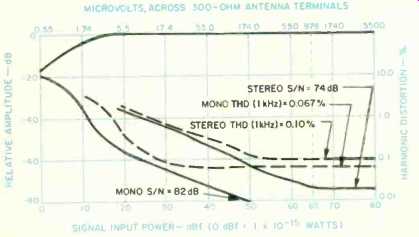
Fig. 1 Mono and stereo quieting and distortion characteristics, FM section.
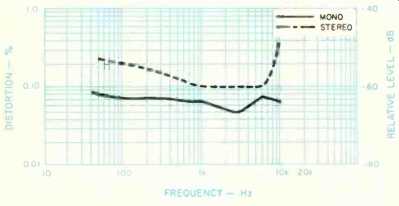
Fig. 2 Distortion vs. frequency, FM tuner section.
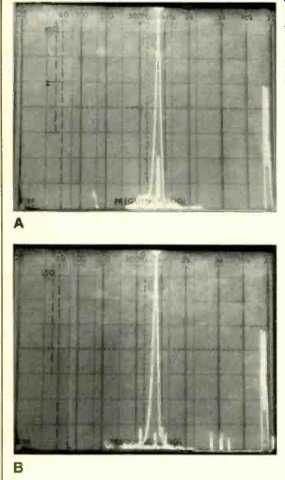
Fig. 3 FM IM distortion measurements in wide (A) and narrow (B) i.f. modes.
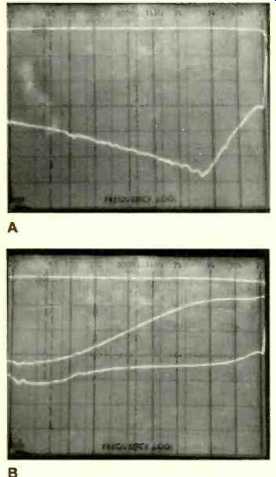
Fig. 4 Stereo FM response and separation in wide (A) and narrow (B) i.f.
modes. Center curve in (B) shows effect of automatic blend control.
Figures 4A and 4B show stereo FM frequency response (upper traces) and separation in both i.f. bandwidth modes.
Separation measured 47 dB, 42 dB and 37 dB at 1 kHz, 100 Hz and 10 kHz respectively in the wide mode; in the narrow mode (Fig. 4B), separation decreased to 36 dB at 1 kHz, 37 dB at 100 Hz and 31 dB at 10 kHz. The middle trace in Fig. 4B shows the further decrease in separation at high frequencies when the auto-blend circuit functions under weaker signal conditions.

Fig. 5--Stereo FM 5-kHz crosstalk characteristics in wide (A) and narrow
(B) modes.
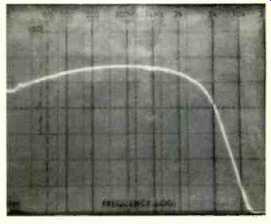
Fig. 6--AM frequency response.
Figures 5A and 5B show the crosstalk components observed at the output of the unmodulated channel when a 5 kHz signal (tall spike at left of each display shown for reference level) is used to modulate the opposite channel.
Note the additional crosstalk components generated when the tuner is forced to operate in the "narrow" i.f. bandwidth mode (Fig. 5B). AM suppression measured 62 dB for our sample, while i.f. and spurious response rejection were both in excess of 100 dB. Image rejection measured 85 dB, as claimed.
Stereo and muting threshold were both set at approximately 21 dBf on our sample (just over 6µV referred to a 300-ohm input impedance). Subcarrier product rejection measured 65 dB (as against 60 dB claimed), while SCA subcarrier rejection was a very satisfactory 72 dB. AM frequency response was no better than that normally observed on most "high fidelity" receivers. Results of these response measurements are plotted in Fig. 6, and even if one wanted to apply very generous tolerances of ±6 dB, response could not be legitimately claimed beyond 4 kHz or thereabouts.
Amplifier Measurements
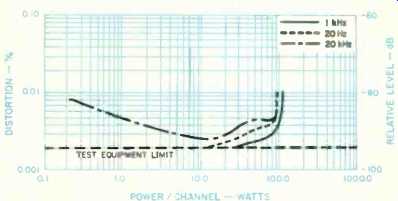
Fig. 7--Distortion vs. power output.
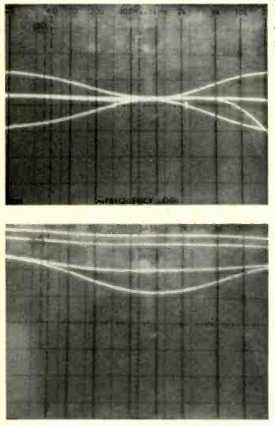
Fig. 8--Tone control and high-cut filter response.
Fig. 9--Action of separate loudness control.
Using 8-ohm loads, the amplifier section delivered well over its rated power level: 102 watts per channel for 0.01% THD for a 1-kHz input test signal applied via the AUX jacks.
At rated power (85 watts per channel), THD measured 0.0035% at mid-frequencies, and 0.005% at 20 Hz and 20 kHz. SMPTE-IM distortion measured 0.008% at rated output. Figure 7 is a plot of THD versus power output for these three key test frequencies using 8-ohm loads.
I checked the amplifier's power output capabilities using 4-ohm loads as well, and it delivered 142 watts at mid-band for 0.05% THD. At .110 watts per channel, for a 1-kHz test signal, THD measured only 0.021%. Damping factor, measured for a 50-Hz test signal, was a bit more than the 130 claimed, while dynamic headroom fell a bit short of the claimed 2.0 dB, measuring 1.6 dB. Since dynamic headroom is not a qualitative test, I would not criticize Mitsubishi too strongly for not quite coming up to their published figure for this specification.
I also measured CCIF IM distortion using the twin-tone, equal amplitude test signals at frequencies ranging from 9 and 10 kHz to 19 and 20 kHz. The worst-case results were a CCIF IM reading of 0.016%. Using the same twin-tone technique, I also calculated the IHF IM distortion using spectrum analysis display of IM components in the audio range. These calculations yielded an IHF IM of 0.10%. Input sensitivities for the phono equalizer sections, referred to 1-watt output, were 0.26 millivolt for the MM inputs and 0.011 mV for the MC inputs. High-level inputs (AUX, tape) required 17 millivolts to deliver the reference 1-watt output with volume control at maximum. Signal-to-noise ratio for the MM phono, using a 5-mV input with the master gain control adjusted to produce 1-watt output, was 82 dB, "A" weighted, while for the MC phono input, using 0.5-mV input, the S/N was 78 dB. Both of these results were significantly better than the published specifications. The S/N for the high-level inputs was 88 dB, while residual hum and noise with the master volume control set to minimum was 89 dB below 1 watt (109 dB below full rated output). RIAA was off by +0.2 dB at the bass extreme and by-0.2 dB at 15 kHz. The subsonic filter had a-3 dB cut-off point of 19 Hz.
Action of the bass and treble tone controls is shown in Fig. 8, together with the response of the high-cut filter which had its -3 dB point at 7 kHz. The separate, continuously variable loudness control (which, as far as I am concerned, is the only truly useful form of loudness compensation control) covers a range of 20 dB, and its action at various settings is depicted in the multiple traces shown in Fig. 9.
Use and Listening Tests
Ever since Mitsubishi entered the U.S. market with receivers and components a few years ago, I have felt that this company had a great sense of style in control layouts in short, good human engineering. That tradition is clearly in evidence in the DA-R35, but there's much more to this receiver than just good looks. All of its controls do exactly what they were intended to do in an effortless manner suggestive of the conservatism that's inherent in this design and the reserve power that's available at the output of the receiver. I do wonder why the "peak indicator" lights illuminate well before actual clipping levels are reached. True, the owner's manual does reassure the user that occasional flashing of these lights need be of no concern, but caring users are apt to "back off" on power.
As for sound quality, most of the receivers that I've tested lately sound as good, if not better, than some of the separate high-priced amplifiers I used to test three and four years ago, and it's really hard to rate sound quality when audible differences between well-built receivers are so minimal. Suffice it to say that I could detect no strident sounds in any of the reproduced program sources. I know of few speaker systems that would require more power than is delivered by the combined continuous power rating plus the dynamic headroom of this receiver. FM performance was excellent, not just in terms of low distortion, but in terms of the number of listenable signals received in my area, which was higher than usual. Although I personally resent the "loss of control" which arises from automation of the wide/narrow bandwidth and the auto-blend selection, I have to admit that the auto-blend came on only for those situations when I would have turned it on myself, and for those instances when the set switched over to "narrow," I would have selected that mode had there been a choice too. So, while the high level of automation is perhaps an ego-deflation feature for such as this reviewer, it does work and well, too!
-Leonard Feldman
( Audio magazine, Apr. 1982)
also see:
Mitsubishi DA-R20 Receiver (Aug. 1980)
Mitsubishi Model DA-F10 AM/FM Stereo Tuner (Dec. 1977)
Mitsubishi LT-30 Turntable (June 1981)
Mitsubishi DP-EC1 direct-drive turntable (ad, June 1977)
= = = =